This “Limited Edition” Blu-ray from Radiance Films is currently available to purchase.
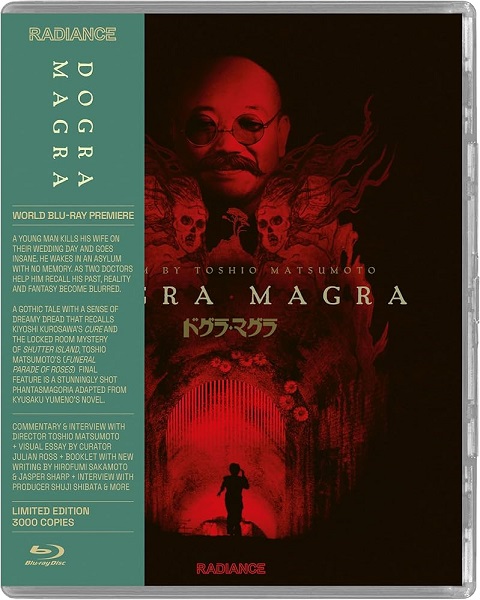
There are a lot of wildly divergent brain-twisting movies out there, from Eraserhead, El Topo, House, Inland Empire to Enemy and many more. If you’re patient and look hard enough you might find meaning within them, but they don’t necessarily hinge on a typical narrative storyline. Instead, it’s the tone and atmosphere that drive these pictures. And, more often than not, they seem to inspire feelings of dread or sadness. The Japanese feature Dogra Magra certainly fits this bill, and in some respects is even more surreal that the titles listed above.
The story is based on a Japanese cult novel of the same name from 1935 that was, for many years, considered unfilmable. In 1988, noted arthouse filmmaker Toshio Matsumoto (Funeral Parade of Roses) convinced the son of the author that he could adapt the book successfully. The results were, much like the original novel, confounding but also fascinating, in the process earning the picture a cult following.
Radiance Films is now presenting the film to North American audiences on Blu-ray with a sharp transfer that was presented to the distributor by producer Shuji Shibata. Now audiences can try and make sense of it all in their own home.
This tale begins with amnesiac Kure Ichiro (Yôji Matsuda) waking up in a psychiatric institute. After trying to find his way out, he is confronted by the staff. In particular, the two doctors Professor Masaki (Shijaku Katsura) and Professor Wakakbayashi (Hideo Murota). The confused Kure spends time with each, who both attempt to help their patient find his memories and learn why he has been institutionalized.
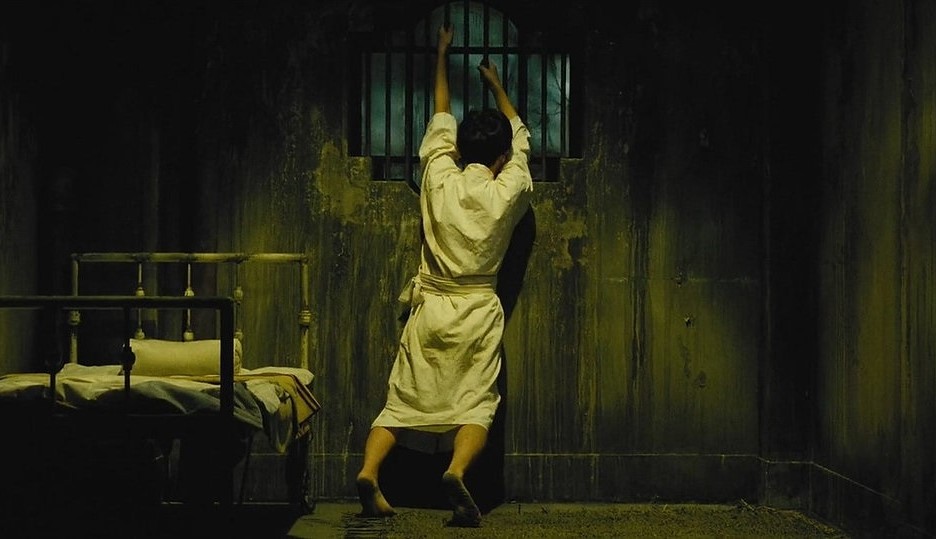
It is a difficult trip, as the two doctors use vastly different methods of treatment. Kure has many surreal visions, but makes progress, only to have the rug repeatedly pulled out from under him. He soon discovers that he might have murdered someone (just like a past relative) and spirals further, experiencing hallucinations. Eventually, Kure is told one of his doctors has been dead for weeks, leaving him wondering if his caregivers aren’t mad themselves, trying to drive him insane, or if everything is happening exclusively in his psyche.
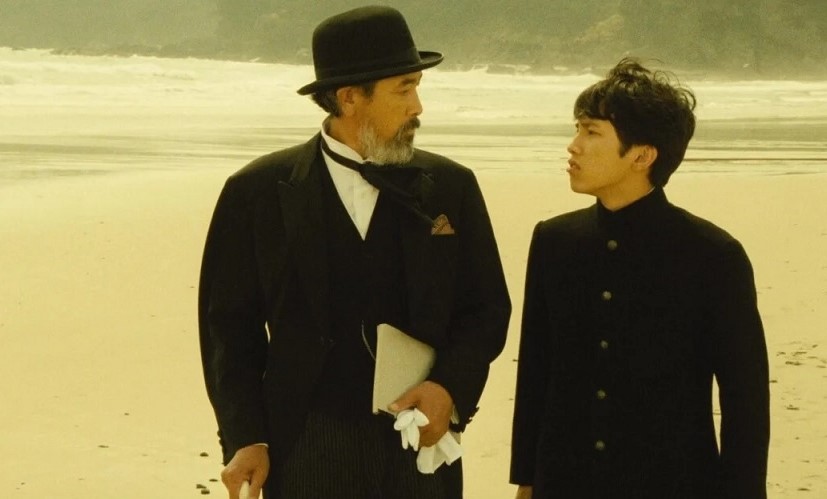
The movie offers a suggestion or two by the close, but nothing is abundantly clear. It’s like watching a labyrinth nightmare unfold that has no answers and forces you to try and come to your own conclusions. Of course, this might be a frustrating experience for some, but if you are willing to go along for the ride, it offers stunning images and surreal moments that will leave your head spinning.
Some of these bizarre and occasionally violent bits include a repeated image of a fetus in the water, a story within the narrative that is told using puppets, as well as a single conversation taking place at two separate but completely different locations. And when the character really struggles to keep his mind in check, the lighting stands out, including a moment when an entire office turns red and materials fly through the air, seemingly chasing Kure as he tries to escape.
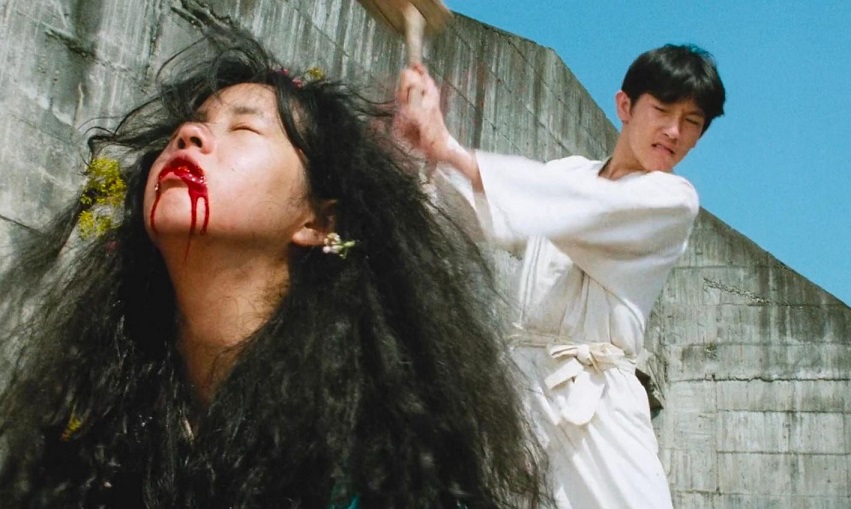
As mentioned, the picture is gorgeously shot and the period production design is equally impressive. The transfer is quite good as well. I watched the Blu-ray on my Sony 4K player that upconverted the image and found it to be a pleasing experience on my screen. There is some natural film grain present but nothing distracting, and many of the visually dynamic moments, like the red-tinged office meltdown and puppet show look wonderful. The climax also features a bold and striking color scheme.
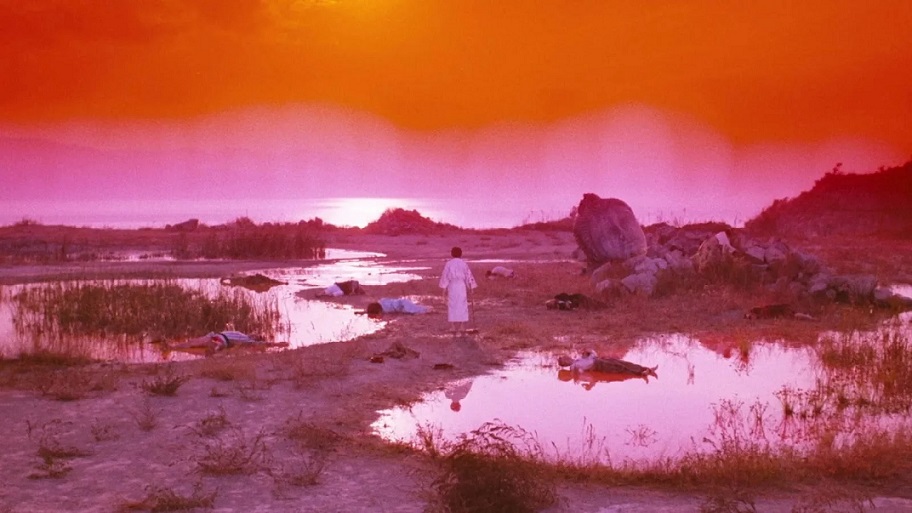
This Blu-ray also comes with a few bonuses that may help discern not only what’s going on but how the movie got made. There is a commentary track with director Toshio Matsumoto as well as an archival interview from 2003. Matsumoto recalls reading the book and, after finding that it spun his brain into knots, became obsessed with it. He attempted to get it made for years, but found no studios willing to fund the project. After putting it aside, he ultimately met the son of the writer. They talked more about the story and the filmmaker began, once again, to try and get it into production. Period pictures set in the same era of this story had become popular, so this time the director was able to secure a small but reasonable budget to start shooting.
He talks about what could be occurring in the tale, although admits that, just as in the novel, nothing is entirely certain. Essentially, he leaves it to you to make up your own mind about what is going on. During much of the commentary, he’s stating what is being depicted and that it could mean this, or something else. While it is anything but definitive, it does add options to interpretations and is fun to listen to.
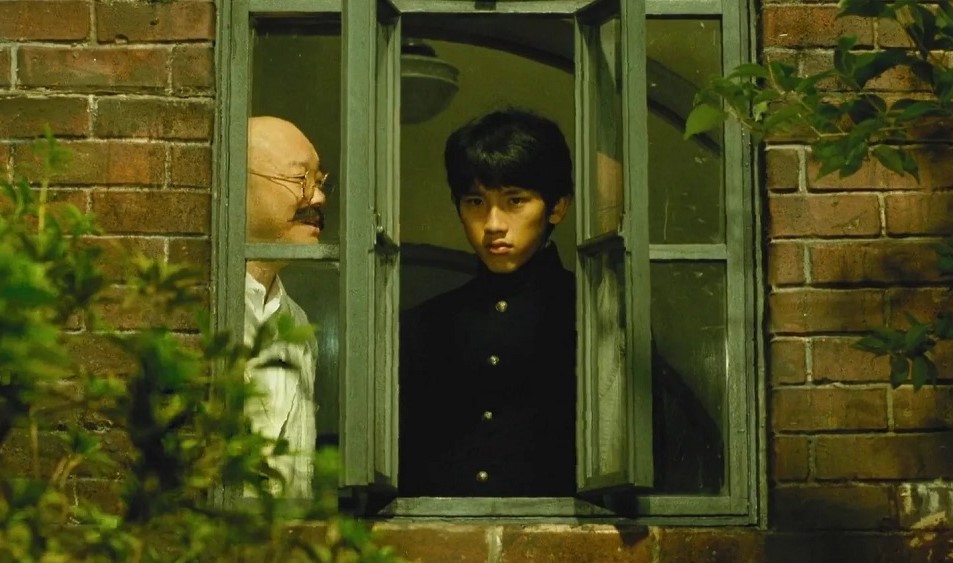
There is also a featurette on the work of the cinematographer, who created some of the incredible imagery on display in the movie. The picture also features a Japanese chant that is part of a significant sequence in the film. An archival extra shows “legendary street performer” Hiroshi Sakano working on the tune and how to perform it properly.
Additionally, the disc includes sketches of some of the sets, as well as a trailer for the movie. Naturally, the disc also comes with a booklet with more writing on the movie and what is going on, and a director’s statement about the picture too.
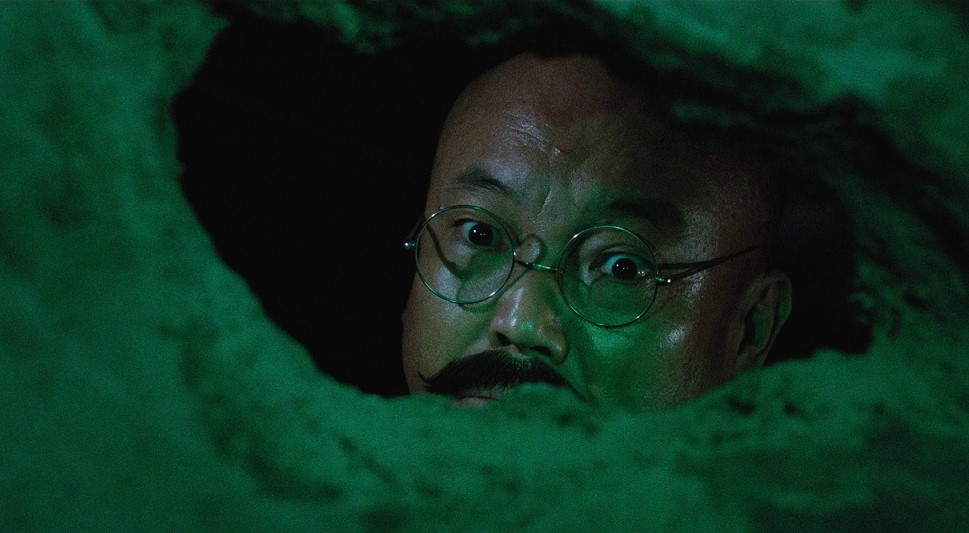
While I can come up with a personal theory of what might be happening in this film, I have no way of knowing for sure if I am correct. But of course, I believe that is the point of the story and feature… to get us lost in the ramblings of a scrambled mind searching for some meaning or reliable explanation of the world around him. It is a brain-teaser and that was always the intent.
Dogra Magra is a fascinatingly odd movie and those with a taste for the surreal will definitely appreciate the film and the cleaned-up picture courtesy of Radiance Films.


